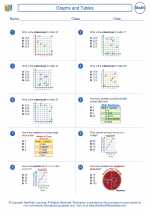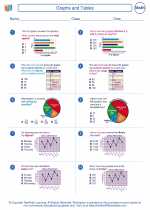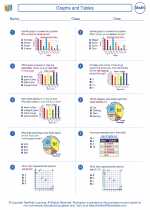Constants
In mathematics, a constant is a value that does not change. It is a fixed value that remains the same throughout a problem or equation. Constants can be represented by letters or symbols and are used in various mathematical expressions and equations.
Types of Constants
There are several types of constants in mathematics:
- Numeric Constants: These are constant values such as 1, 2, 3, etc. They do not change and remain fixed.
- Physical Constants: These are constants that represent physical quantities, such as the speed of light (c) or the gravitational constant (G).
- Mathematical Constants: These are special constants that arise in mathematical formulas and equations, such as π (pi) or e (Euler's number).
Examples of Constants
Here are some examples of constants:
- The value of π (pi) is a mathematical constant that represents the ratio of the circumference of a circle to its diameter, approximately equal to 3.14159.
- The speed of light in a vacuum, represented by the symbol c, is a physical constant with a value of approximately 299,792,458 meters per second.
- The gravitational constant, denoted by G, is a physical constant used in the law of universal gravitation and has a value of approximately 6.674 × 10-11 N m2 kg-2.
Study Guide
When studying constants, it is important to:
- Understand the concept of a constant as a fixed value that does not change.
- Learn to identify different types of constants, such as numeric, physical, and mathematical constants.
- Memorize the values of important mathematical constants like π and e.
- Practice using constants in mathematical expressions and equations to solve problems.
Understanding constants is essential in various mathematical fields, including algebra, geometry, calculus, and physics.
.◂Math Worksheets and Study Guides Fifth Grade. Graphs and Tables
Study Guide Graphs and Tables
Graphs and Tables  Worksheet/Answer key
Worksheet/Answer key Graphs and Tables
Graphs and Tables  Worksheet/Answer key
Worksheet/Answer key Graphs and Tables
Graphs and Tables  Worksheet/Answer key
Worksheet/Answer key Graphs and Tables
Graphs and Tables 

 Worksheet/Answer key
Worksheet/Answer key
 Worksheet/Answer key
Worksheet/Answer key
 Worksheet/Answer key
Worksheet/Answer key

The resources above cover the following skills:
Geometry (NCTM)
Specify locations and describe spatial relationships using coordinate geometry and other representational systems.
Make and use coordinate systems to specify locations and to describe paths.
Connections to the Grade 5 Focal Points (NCTM)
Data Analysis: Students apply their understanding of whole numbers, fractions, and decimals as they construct and analyze double-bar and line graphs and use ordered pairs on coordinate grids.